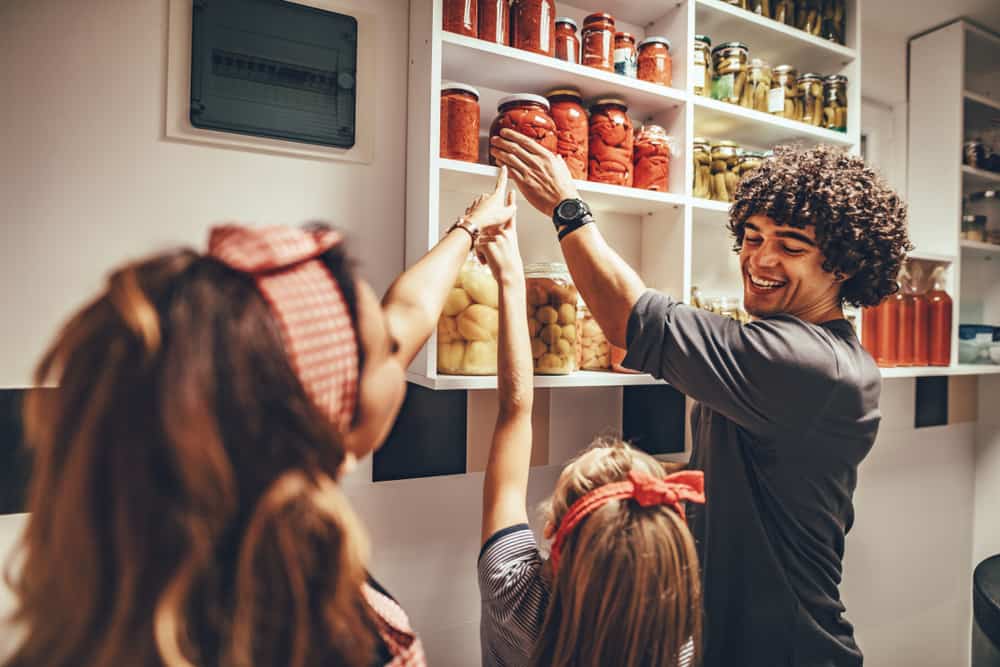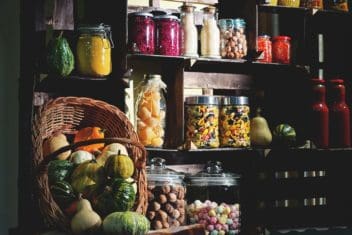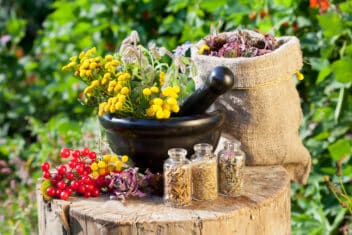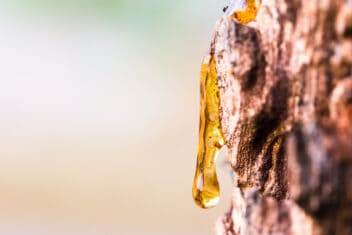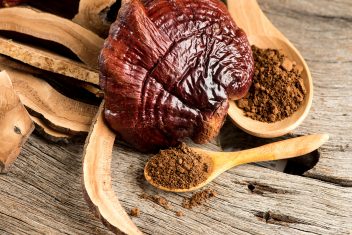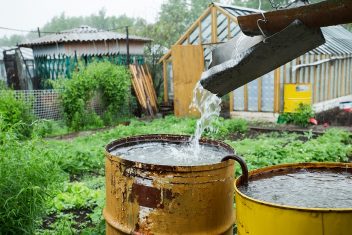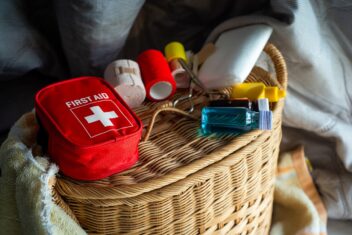If there’s one factor that has influenced every single human society since we first began walking upright, it’s food security.
Food is life, and civilizations have risen and fallen based on abundance or scarcity. As climate issues worsen and grocery prices rise, finding a way to be independent with your family’s food security isn’t just a good idea; it’s a must.
Below are 12 ways to help ensure that you all have enough to eat while also supporting local farmers and keeping your community healthy and vibrant.
1. Learn to Forage
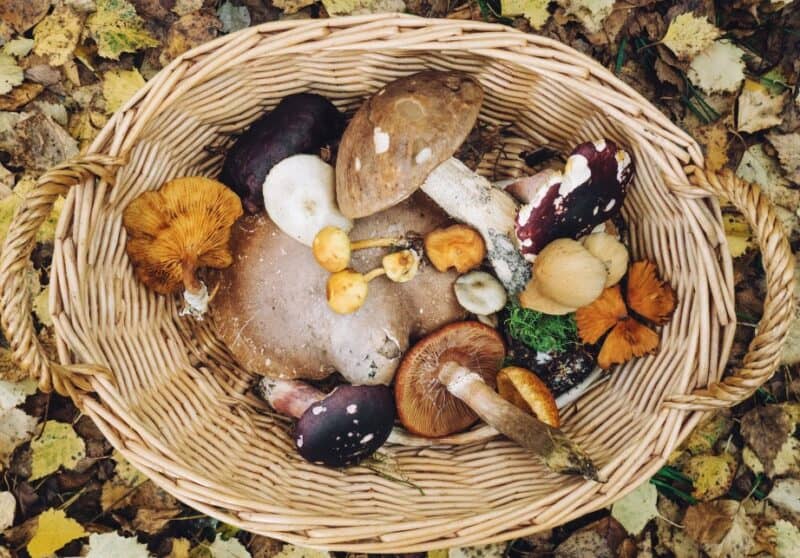
You may not believe just how much food is available for free. Wild foods are more available if you live in the country, of course, but even suburbs and urban areas have plenty that you can forage for.
The key is to do your research first to determine what the foraging laws are like in your area and to figure out which wild foods are safe to consume.
For example, although the roots of plants like burdock and wild carrot are edible, they also absorb toxins from their immediate environment. They may grow abundantly in the ditches next to the highway, but that doesn’t mean they’ll be good for you to eat.
Similarly, wild berries that grow around the periphery of public parks may have been absolutely hosed with pesticides and dog urine.
Review our articles to check out the many wild foods you can forage. Depending on what’s available in your area, you may be able to supplement your grocery runs with wild greens, berries, roots, and nuts, or even make wild foods the bulk of your diet!
When it comes to increasing food security, every little bit helps.
2. Grow Your Own
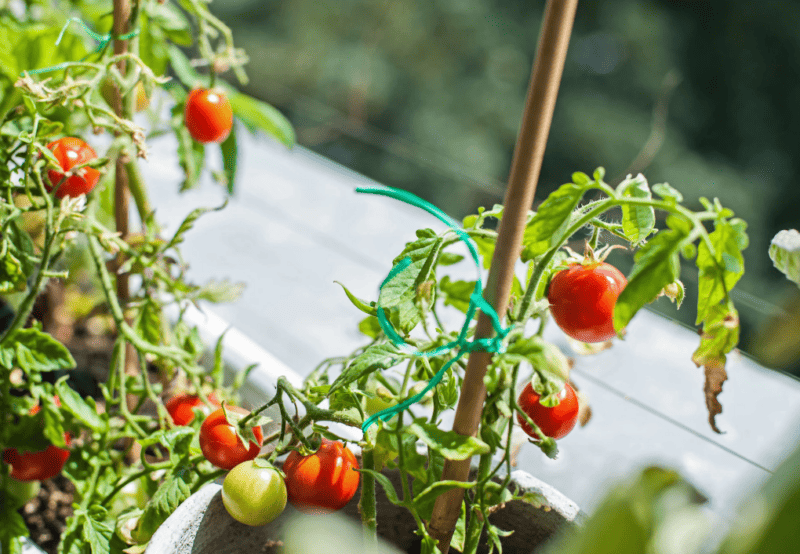
Everyone is capable of growing at least a small portion of their food. Yes, that means you too!
If you have an area where you can place a single pot of soil, you can grow food. Even if you don’t get any direct light in your home, you can grow edible mushrooms in a cupboard or closet, or any edible plants that thrive in the shade, such as kale, arugula, and lettuce.
If you only have a patio, you can still grow a ton of food. Visit our guide for some ideas. Or say you have a small yard. You could develop a micro-farm. Vertical gardens take up little square footage but give you a ton of food if planted well.
Determine how much space you have available to work with, whether outside or indoors. Then, make a list of all the vegetables, roots, fruits, and herbs that you and your family enjoy eating.
There’s no point in spending a ton of time and energy growing foods that nobody actually wants to consume, believe me. I once spent ages carefully tending my bean plants, only to discover that I was the only person in my family who liked them — so much sadness.
3. Choose Species that Thrive in Your Growing Zone
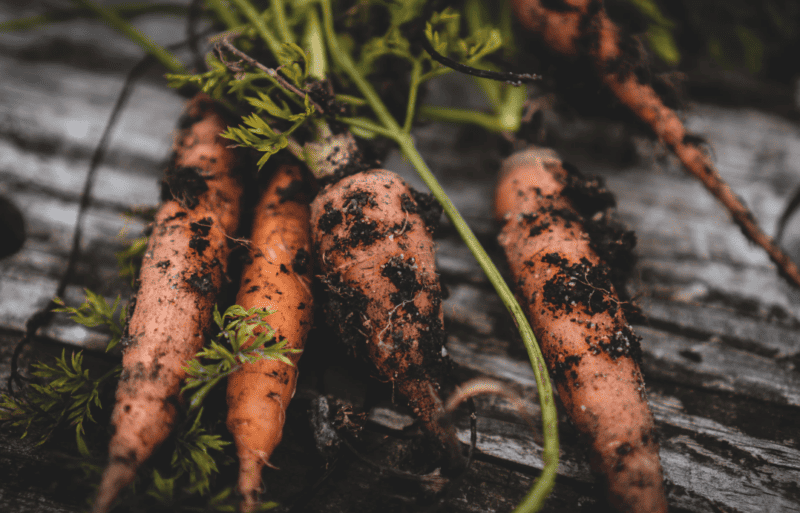
The best way to ensure food security is to plant species that you know will thrive in your local environment. Once you’ve determined the types of foods that will actually be eaten (and enjoyed) in your home, it’s time to find out which will do best in your area.
Locally cultivated plants need less maintenance, water, pesticides, or herbicides because they’re adapted to your environment.
Look for heirloom varieties that have been cultivated within 100 miles of you for at least 40 years. These will have evolved to withstand local soil-borne pathogens and have proven that they’ll thrive with the sun, soil, and water available to you.
Additionally, talk to farmers at your local markets and get their advice on what does best in that locale.
If you’re unable to source heirlooms from your own region, seek out plants that grow in similar climates and conditions. Look at a map that shows global hardiness zones, and find those that match closest to yours. Find out what their soils, rainfall, and sunshine are like.
For example, I’m currently in the sub-boreal Laurentian mountains, in USDA Growing Zone 4b, with a short growing season and heavy rainfall. As such, plants that thrive in the Scandinavian, Slavic, and Baltic countries do well here, as well as those from Kazakhstan, Mongolia, northern China, North Korea, and northern Japan.
When I lived in northern California, I grew plants that did well in that hot, dry, 9B climate. These included species from all across the southern USA, as well as Argentina, Peru, Spain, Algeria, Iran, South Africa, and southeastern China.
4. Plant Perennials
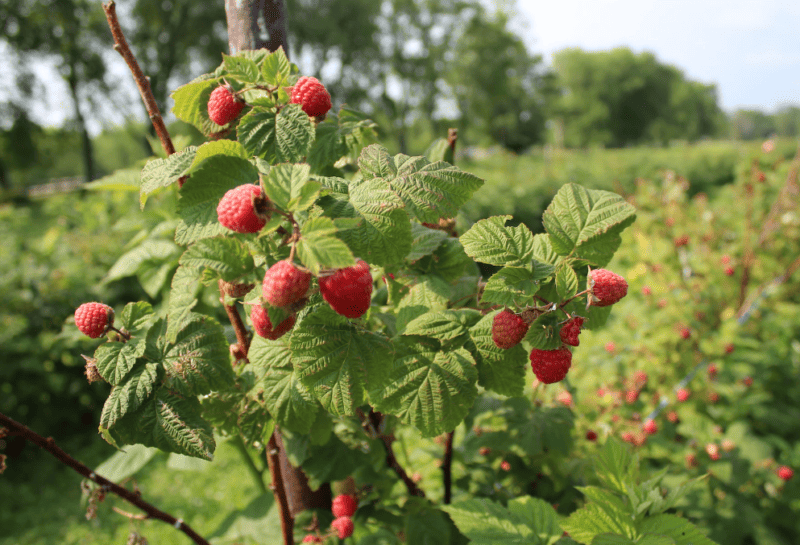
I cannot stress this one enough. Growing food takes an extraordinary amount of time and effort, and you never know what your capabilities will be like from one year to the next.
You can ensure higher rates of food security if you plant species that you can count on to keep coming back year after year, doubly so if you plant edible perennials that are either indigenous to your area or thrive in a similar climate.
Do some research to discover the edibles that are native to your particular region. They’ll take a couple of years to establish after you’ve planted them (remember, perennials sleep, creep, leap) but will keep returning for a good long time.
Furthermore, they tend to spread enthusiastically, which means that not only will you have plenty of food for your own family, you’ll have some to share or trade with others as well.
We planted a dozen Jerusalem artichoke (Helianthus tuberosus) tubers four years ago, and we now have a hedge of them spanning nearly 40 feet along the perimeter of our southwest garden.
Find out which perennial foods your family members like best, and make their cultivation a priority. Start today, because it will be several years before they are producing at their full capability.
5. Diversify Your Garden for Greater Food Security

If you’ve ever lost an entire crop of vegetables to a fungal pathogen or insect infestation, you know how devastating that loss can be. This is why it’s so essential to plant crops in several different locations on your land.
On the off chance that your one tomato patch gets hit with powdery mildew or cabbage white butterflies annihilate your kale, you’ll still have plants to harvest from in separate areas.
This is also why it’s so important to rotate your crops and to choose disease- and pest-resistant varieties. The more advantages your plants have, the greater the likelihood that you’ll actually have food to harvest and preserve at the end of the season.
This is the cornerstone of food security and thus has to be a major priority.
Your best bet is to have several little food guild pockets scattered around your garden. If you like apples, for example, grow a few apple trees within 20-30 feet of one another in one area, then another stand of them at the opposite end of your property.
Do you love potted herbs? Grow the same kinds in at least two different locations. Create abundant, interplanted garden beds everywhere you can, and tend them diligently.
6. Join (or Create) a Community Garden
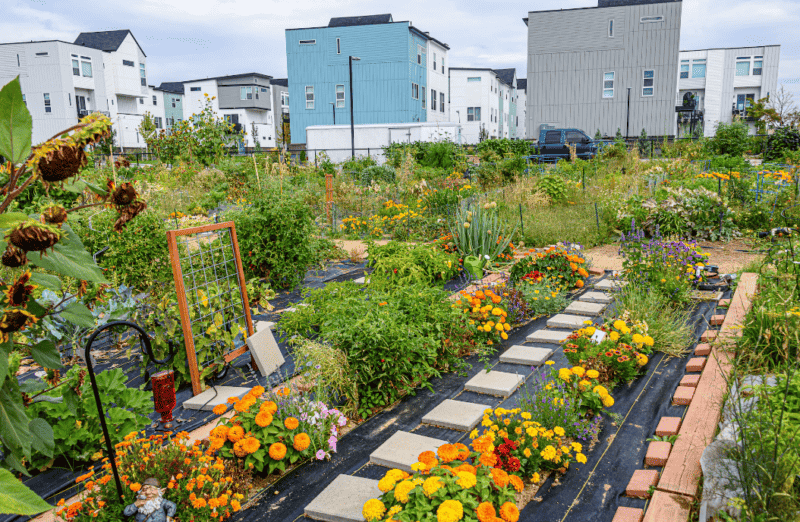
If your goal is heightened food security, but you have next to no land to work with (such as if you’re stuck on the 30th floor of an apartment building), either seek out a community garden to join, or establish one.
Many cities and suburbs have community gardens or allotment plots, and you’d be amazed at how much can be grown and shared in these little spots.
Alternatively, if there aren’t any community gardens in your area, it’s not difficult to get one going. Talk to your local authorities about potential areas, and then talk to your neighbors about getting this going.
Plots of land that have gone unsold and undeveloped for a number of years can often be rented for pennies and transformed into urban Edens. Similarly, sometimes local places of worship have land that can be used for community food initiatives.
As a final idea, some cities have “borrowed backyard” programs that are proving to be quite effective for community food security.
Essentially, a person with a backyard but no time to garden in it will team up with community members who have the time and energy to do so but no land of their own.
Those neighbors will transform the backyard into a thriving urban farm, and the yard’s owner will get a percentage of everything grown within it. The food is then distributed between the growers, local food banks, etc.
7. Barter and Exchange Whenever Possible
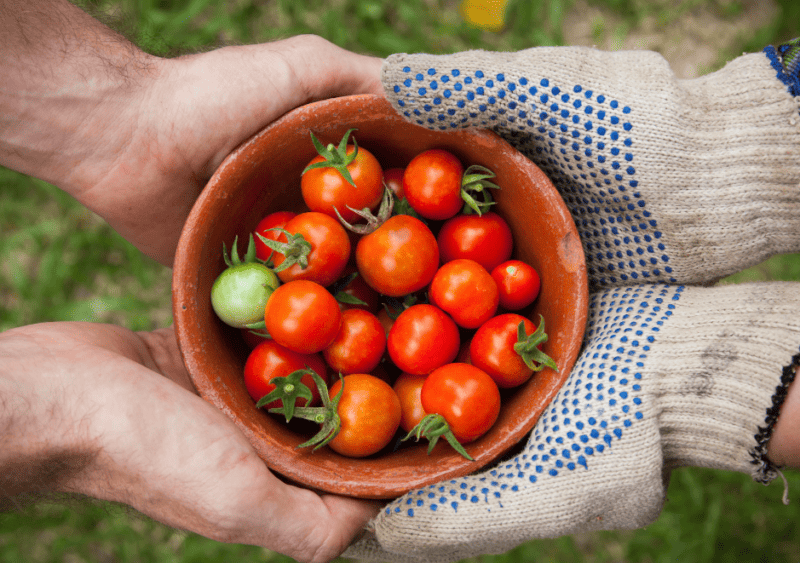
Long before the advent of supermarkets and grocery stores, people grew what they could and bartered for what they couldn’t grow or create themselves.
For those who may not have a great deal of money to work with (which seems to be more necessary as food prices skyrocket), bartering is one of the best ways to ensure food security—both for now, and for the future.
For example, I have a jar of wildflower honey in my pantry that I traded for a jar of chest salve and a bottle of ghost pipe (Monotropa uniflora) tincture.
Last year, I knit a pair of Fair Isle woolen socks in exchange for a basket of chanterelle mushrooms and blackberries, and I’ve mended and embroidered clothes in exchange for fresh chicken and duck eggs, salsa, medicinal and culinary herbs, and vintage pottery.
Everyone has either items or skills that can be traded or exchanged with what others have to offer. The key is getting to know those in your community with whom you can exchange. Think of it like returning to village life, where everyone shared their skills with one another.
8. Fill the Pantry When Items are in Season/on Sale
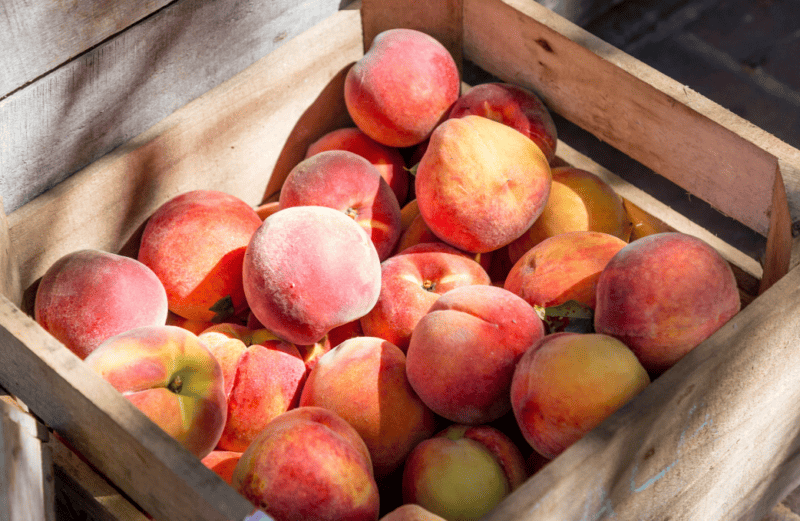
Every species ripens in its own season, and is inevitably the most affordable when it’s most abundant. For example, apples will be far cheaper in September and October than in April, and the asparagus that’ll cost you an arm and a leg in February will be dirt cheap in June.
As such, stock up on produce when it’s in season, as your money will go a lot further. Buy in bulk and preserve whatever you don’t use immediately.
Furthermore, take full advantage of farmer’s markets for this, especially at the end of the day! Farmers often mark down produce that hasn’t sold that day so you can get significant discounts.
Similarly, keep an eye out for sales and discounts when you’re out shopping. Most grocery stores restock on Tuesdays and Fridays, with the previous weekend’s items going on sale on Tuesday, and the next weekend’s abundance getting marked up on Fridays.
As such, aim to do your shopping between Tuesday and Thursday for optimal savings. If and when you find staples such as oats, rice, flour, salt, canned goods, and oils on sale, buy extras for the pantry!
9. Do Some Type of Food Preserving Once a Week
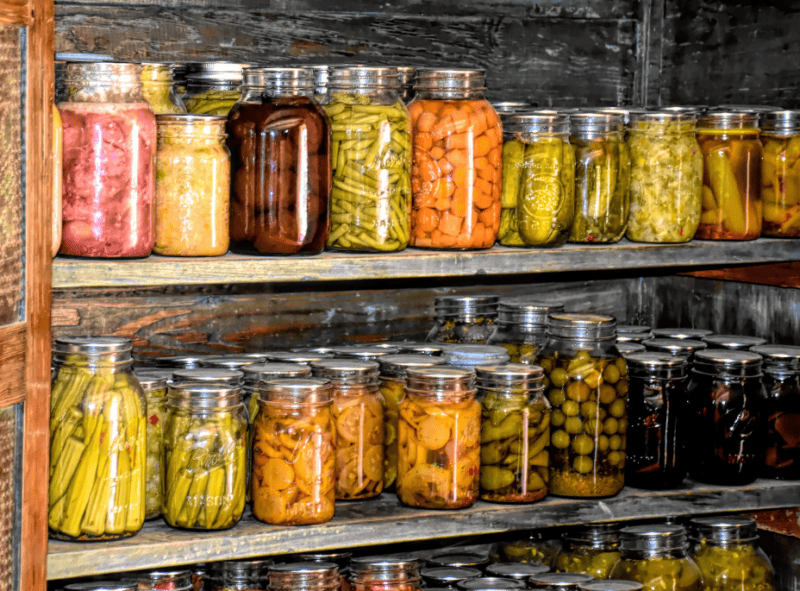
This builds upon the previous tip regarding stocking up on foods when they’re abundant. If you buy items in season and on sale, aim to preserve at least part of what you’ve bought for future food security.
Depending on what you’ve purchased, this may involve canning, pickling, dehydrating, freezing, or simply repackaging items for long-term storage.
There are 52 weeks in a year, with different produce items coming into ripeness approximately every two weeks. If you were to do one single batch of preserving every week, that’s a LOT of food put by for later.
Let’s say you decide to make a batch of pickles on a Saturday afternoon. That’ll take two to three hours to sterilize your jars, cut the cucumbers, stuff them into said jars, and cover with brine, and water bath can. For a single batch, you might end up with ten jars’ worth of pickled deliciousness.
Multiply that effort by 52, and yes, that means 520 jars of food set aside. This doesn’t have to be jars specifically, of course: you might dehydrate a bunch of apple slices one day and store them in airtight plastic containers with desiccant packages. Or freeze ten zipper bags’ worth of blanched greens. But you get the idea.
10. Buy in Bulk and Store in Several Places

Much like with gardening, one of the mistakes that many people make is to store all their food in one area, such as a designated pantry or food cellar.
It seems to make sense to do this because then all the food is kept in one area, which can be secured or tended to regularly. Unfortunately, it also means that in case of disaster, the food stored in that area may be rendered inedible or destroyed.
Imagine what a detriment it would be to your family’s food security if all the canned goods that had been lovingly prepared and set aside in the cold cellar were ruined by a natural disaster.
A severe earthquake can shake shelves loose and shatter jars everywhere. Similarly, a flood can come through to knock over and soak stores of dry goods.
This is why it’s important to diversify your food storage areas in the same way that you spread your garden produce around. By all means, stock your pantry and cold cellar well, but have caches in other areas.
Consider keeping canned and dry goods in zipper bags under your bed, and in various closets. Ensure a variety of different foods, with every cache containing ingredients that constitute breakfast, lunch, dinner, snacks, and beverages for at least 72 hours.
If a tornado whips through and cuts off access to your downstairs pantry, you’ll be grateful for a few days’ worth of supplies in every other room.
11. Reduce Your Food Waste
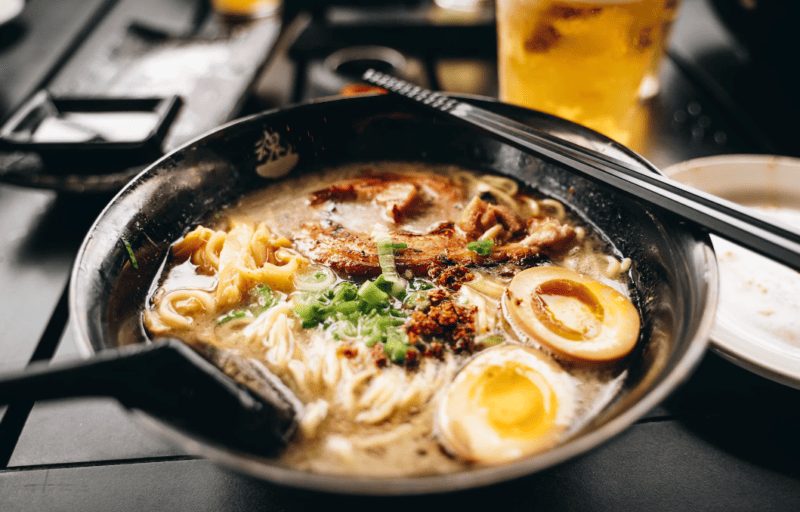
Most North Americans will waste about $1,500 worth of food every year. In addition to household waste, grocery stores, and restaurants are notorious for wasteful behaviors, resulting in about 200 BILLION pounds of wasted food annually.
Considering that 2.5 billion people worldwide live with moderate or severe food insecurity, this kind of waste becomes unfathomable.
If you plan carefully and use things up as thoroughly as possible, you’ll waste far less food and increase your own food security exponentially. Some of the things you can do include:
Weekly Meal Planning
Planning ahead means less impulse buying, so you’ll only spend money on meals you know you’ll cook, which results in less waste. You can schedule for leftovers or even make meals in advance to save yourself some time and energy.
It might help to post your plan somewhere visible so the whole family can see what’s coming up. That way, they can plan ahead, as well.
Buy/Cook with Seasonal Ingredients
Eating with the seasons is cheaper and better for the planet. Skip the strawberries and grapes in January (unless you’re in the Southern Hemisphere) and aim for root vegetables instead.
Similarly, enjoy the abundance in the summer. If you happen to grow or buy more than you can harvest, that’s where the next step comes into play.
Store Foods Properly
A lot of food waste happens when ingredients aren’t stored properly and thus break down too quickly.
Find out the ideal storage methods for each of your purchases so you don’t accidentally lose anything to rot or mold. You should also store your harvest the right way so you don’t waste all that hard growing work.
Freeze or Preserve Extras
If you make a huge batch of soup or stew and people are sick of it after two days, freeze the rest. Similarly, do you have leftover corn on the cob after your family BBQ? Take the kernels off and pressure can them for later so nothing goes to waste.
“Scrap” Meals
Save scraps and cuttings such as onion ends, carrot peels, and meat scraps in a freezer bag or freezer-safe plastic container. When it gets full, use those scraps to make soup (ramen!) or stew.
Similarly, use any meal leftovers by transforming them into soups, stews, stir-fries, fritters, or casseroles. If you have leftover bread that’s gone stale, turn it into breadcrumbs, Panzanella salad, or bread pudding.
Our guide to reusing scraps has some other delicious ideas.
Household Materials
You don’t have to eat everything you grow or buy. Sometimes, you can turn things into household materials.
Transform apple peels into apple cider vinegar, use slightly dehydrated lemon halves to scrub cutting boards with the help of coarse salt, crumble dried eggshells into your garden soil, etc.
Compost
Whatever can’t be used up in scrap dishes or household items can be composted. This will turn your scraps into nutrient-rich soil, which can then be used to help nourish future crops. Food security starts at soil level, so be sure to nurture yours!
12. Save and Preserve Seeds
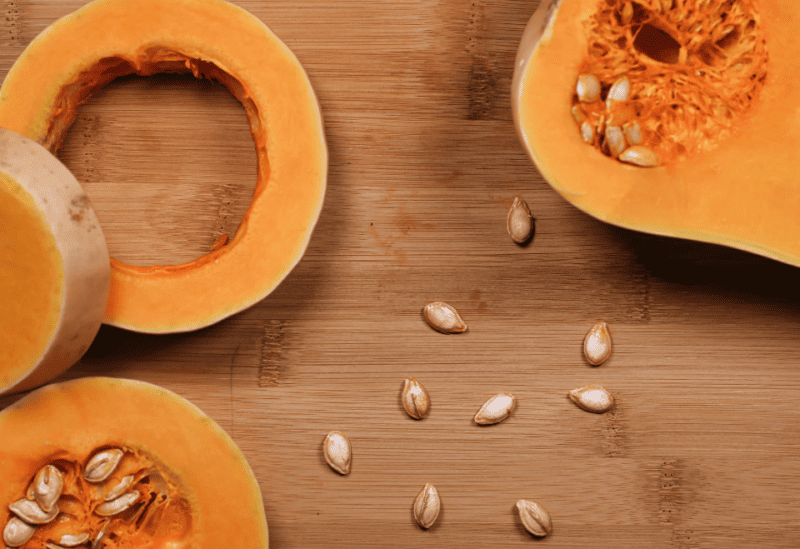
This may go without saying, but one of the best ways to ensure food security year after year is to save seeds from each year’s harvest to plant the following season.
Any plant that survives in your area long enough to bear fruit and go to seed has shown that it’s hardy enough to thrive there, despite all the potential issues that may have arisen during the growing season. As you can imagine, these are the seeds you’ll want to save.
Learn the different methods needed to harvest various seed types. Then package them well, label them clearly with their cultivar name and the date they were harvested, and store them in a cool, dry place until you’re ready to sow them the following year.
If kept in ideal conditions, these seeds may remain viable for thousands of years.
In addition to improving your own food security, you’ll be able to help others to improve theirs as well. Consider how many tomatoes or zucchini you can harvest from a single plant. That plant was grown from just one seed.
Depending on the variety, you could get between 20 and 80 tomatoes from that single plant, and each of those tomato fruits will contain between 100 and 300 seeds, depending on its size. One large tomato has the potential to help people in your community grow over 20,000 fruits.
Share seeds generously, trade with your neighbors, and keep saving seeds for future generations. Food security for all really does require everyone’s help. If we all do as much as we can for ourselves and share what we can with our communities, nobody ever needs to go hungry again.
